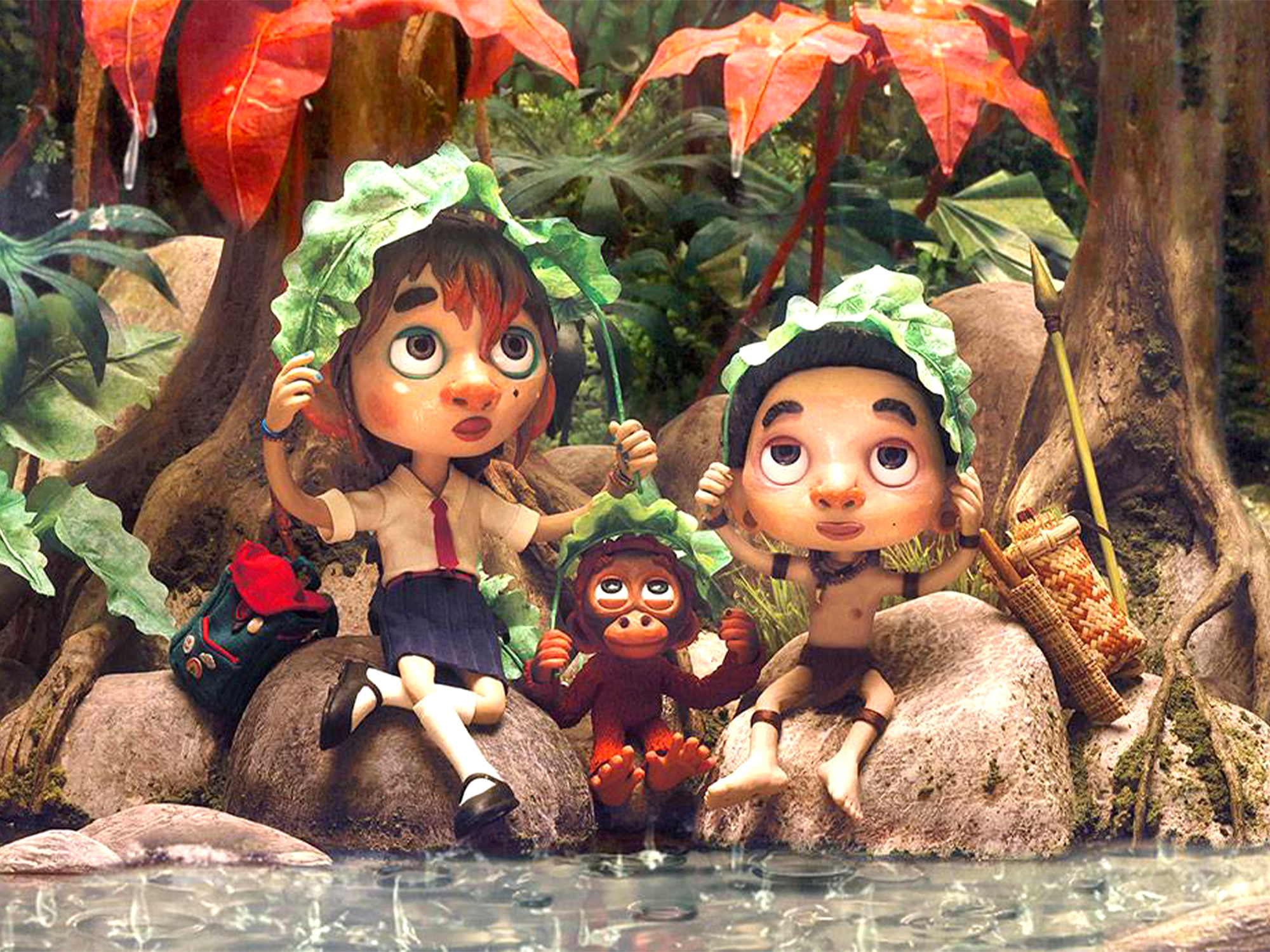
As chainsaws annihilate trees and animal chatter in the opening of Savages, Claude Barras makes clear the target of his new feature film’s title: the drivers of deforestation in the name of “civilisation”, as the title treatment drops over a plantation. While plantation worker Mutang’s additional muttering of “savages” in response to the plantation’s armed guards shooting an orangutan in cold blood feels heavy-handed, it doesn’t take away from the power of the film’s stop-motion craft. Mutang and his young daughter Keria adopt the surviving baby ape, a casualty and representative of the casual barbarity of deforestation.
The film is set in Borneo, told from the perspective of Keria, who lives with Mutang on the edge of the city, in a village between the urban spires and the dense rainforest in which Keria’s extended family live. Her family is part of the Penan people – hunter-gatherers who are one of the hundreds of indigenous groups on the island – and Barras follows Keria as she embraces that part of her family and heritage. It’s a hard-won journey – Keria is skeptical of that tradition and downright horrible to her younger cousin Selaï when he comes to stay with them, even joining in with her friend’s racist taunts. The eventual healing of their familial relationship as it blossoms is the film’s strongest hook, and Barras and screenwriter Catherine Paillé tie this together with Keria learning the connection between her family’s freedom and environmental destruction, as the government attempt to drive them off their land, annihilate their hunting spots and tie them up in bureaucracy. As Keria unlearns her selfishness and materialism, we see it manifest in the companies laying claim to land that doesn’t belong to them. “The world does not belong to us… we borrow it from our children,” as an opening epigraph says, but capitalism isn’t built for the future.
Get more Little White Lies
The writers may be obvious in their allegory in places, but that doesn’t mean they don’t trust their young audience with harsher material, and not just in the bursts of violence. Savages talks frankly about “hope dying slowly” in the forest as the Penan fight the encroaching government off their land but expect the worst anyway. Between the cute gags, there’s also an interest in observation: not in an anthropological sense towards the Penan, but in a contentedness with noticing the patterns of the natural world.
The handmade qualities of this world amplify the sense of devastation. The characters, whose designs resemble Barras’s work on My Life as a Courgette, each have distinct personality in their design as well as a visible human touch on their surface which creates a level of immersion. Adding to this is the dense foliage of Savages’ tactile forest sets, as well as its interest in animated natural life, the sounds of which are often prioritised over a musical score. It makes the barrenness of quarries and logging sites feel downright apocalyptic: the notes for the film highlight the Penan concept of Tana Pengurip – the living forest – not just as the home and livelihood of the Penan, but as the carrier of their stories.
Barras builds the film not just so that annihilation feels tangible, but also so that sense of history and spirituality can be felt as well as told: the natural lighting of the daylight hours gives way to an ethereal glow in the forest at night as Keria encounters a panther that might also carry her mother’s spirit. The fantastical, meticulous nature of Barras’ animation illustrates by contrast the scourge of AI: lifeless, eerily smooth digital simulacrum which is actually hastening environmental destruction rather than encouraging its protection.
Perhaps the most fantastical moment is saved for last, as Savages sees capitalist and governmental power acquiescing to the will of the people, particularly to the passion and ingenuity of youth. But it’s also fitting: why preach cynicism and the belief that stepping outside doesn’t work to younger audiences? It’s hard to fault Barras for making a film which is open-eyed about the destruction of the natural world, but also quietly insistent that it – and we – can be saved.


